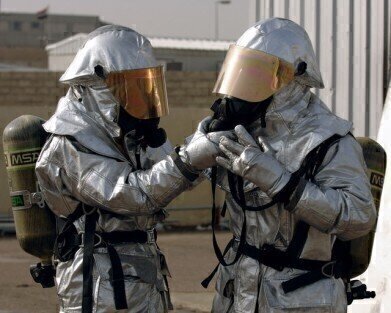Measurement and Testing
Is Ammonia Dangerous or Damaging?
Jun 25 2021
While trace levels of ammonia occur naturally in soil, air, water and even the human body, the stable binary hydride compound can be extremely dangerous in high concentrations. Made up of a single nitrogen atom bonded to three hydrogen atoms, the colourless gas can cause serious injury when inhaled at concentrations of more than 300 parts per million (ppm). Concentrations of more than 2500 ppm can lead to fatality in less than 30 minutes, while concentrations of 5000 ppm and above generally elicit instant respiratory arrest.
How ammonia attacks the body
As a toxic gas, ammonia destroys human tissue on contact. Even small concentrations can quickly irritate moist surfaces like the eyes, throat and nose. Side effects include watering eyes, coughing and a burning sensation in the airways. The risk of ammonia exposure if significantly higher for employees at ice rinks and manufacturing plants equipped with industrial refrigeration systems. Fertiliser manufacturing plants also handle ammonia, which poses a threat to the health and safety of employees.
When ammonia is inhaled it rapidly interacts with mucous membranes in the respiratory tract and lungs. Contact with moisture creates a highly corrosive substance called ammonium hydroxide. This triggers a process called saponification, which destroys tissues by disrupting cell membrane lipids and breaking down proteins. Saponification prompts a severe inflammatory response that can lead to acute swelling in the respiratory tract and lungs. Burns and blindness are both common side effects. In severe cases, like the Carlsberg brewery leak in Northampton, ammonia exposure can result in death.
Ammonia and the environment
As well as destroying cellular tissues, ammonia is a serious environmental threat when not properly monitored. High concentrations can acidify soil, burn foliage and pollute water sources. Ammonia is also a major contributor to air pollution, with the gaseous compound interacting with other airborne pollutants and forming ultra-fine particles called ammonium salts. When inhaled, these can make it difficult to breathe and cause long-term damage to the lungs.
Agricultural farms are one of the biggest sources of environmental ammonia emissions, with livestock waste and fertiliser runoff releasing NH3 into the atmosphere and lowering air quality.
“When people think about air quality, they think about factories and power plants and transportation,” stresses Jason Hill, an associate professor of Bioproducts and Biosystems Engineering at the University of Minnesota. “But agriculture is a substantial contributor to reduced air quality, too.”
Minimising the risks of ammonia damage
From occupational health and safety to environmental emissions, trace level monitoring plays a critical role in minimising the risks of ammonia use. While spectroscopic methods and gas analyser technologies are well established, next-generation laser absorption technology is reimagining the way ammonia is detected and measured. Authors L. Lorena Torres and Babacar Diop introduce the latest NH3 tracking solutions from CI Analytics in ‘New perspectives in ammonia monitoring.
Digital Edition
PIN 25.1 Feb/March
March 2024
In This Edition Safety - The technology behind the ION Science Tiger XT - Safety with ammonia and LOHCs as hydrogen carriers Analytical Instrumentation - Discussion on new tribology te...
View all digital editions
Events
Apr 28 2024 Montreal, Quebec, Canada
Apr 30 2024 Birmingham, UK
May 03 2024 Seoul, South Korea
May 05 2024 Seville, Spain
May 06 2024 Riyadh, Saudi Arabia


















